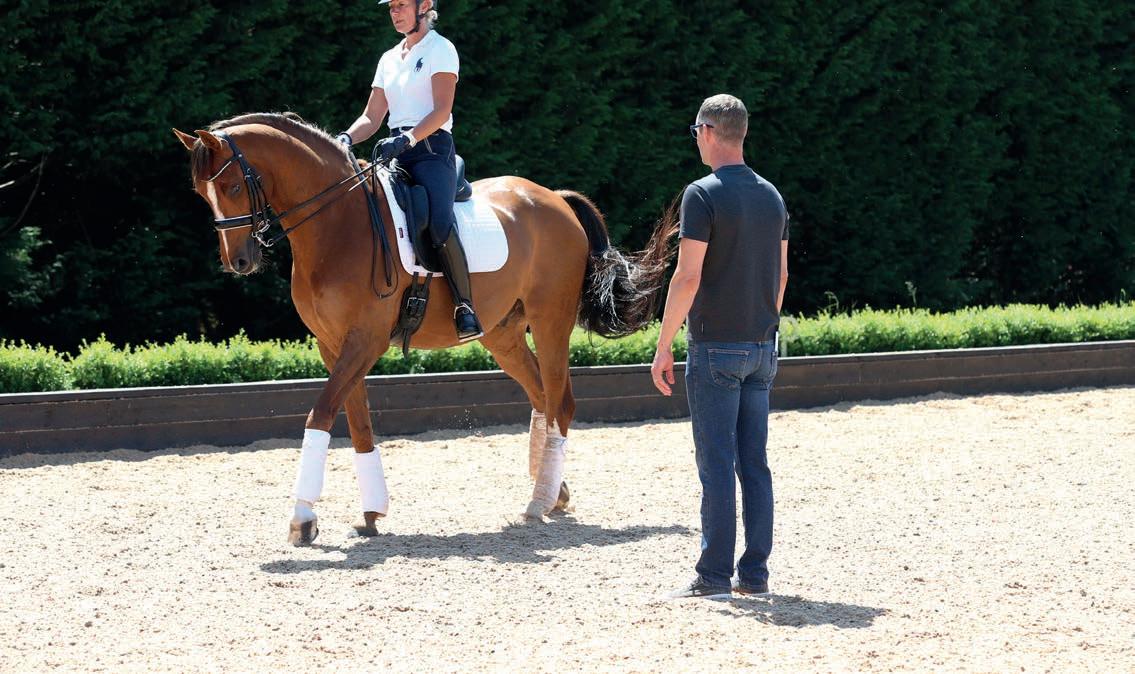
5 minute read
Stay safe in the sun
HERE COMES THE SUN
THERE’S NOTHING BETTER THAN TRAINING OR COMPETING ON A SUNNY DAY, BUT AS HELEN TRIGGS FINDS OUT, SKIN DAMAGE NEEDS TO BE TAKEN SERIOUSLY.
In Britain, hot weather tends to take us by surprise – and so far this year has been a prime example. Boiling hot in spring, followed by cooler weather (duvets back on) and summer returning when you least expect it.
It’s not surprising then, that skin protection tends to be a bit haphazard. It’s important that people working predominantly outside, as well as those riding for recreation and sport, understand that it’s not just on the beach that sun protection is important.
While the sun has plenty of health benefi ts, the action o ultra violet rays can cause damage ranging from unsightly wrinkles through to severe burning and potential skin cancer. At least 100,000 new cases are now diagnosed each year, and the disease kills over 2,500 people each year in the UK – that's seven people every day.
“When we talk about skin cancer, we’re actually talking about a number o diff erent types,” says Professor Richard Marais, a skin cancer expert and director of the Cancer Research UK Manchester Institute. “And for almost all of these types, it’s very clear that the environmental carcinogen is sunlight.”
ore s ecifi cally, it s the ultraviolet (UV) radiation given out by the sun that causes these cancers. This type of radiation can penetrate the skin and damage the DNA inside cells.”
“UV light causes DNA damage which means certain cells in your skin distribute a pigment called melanin to other cells. This causes the skin to darken and is what people call a tan. You only get the tan if you have the
DNA damage,” says Marais. Naturally occurring biological agents in the skin absorb a proportion of UV radiation (UVR), with melanin being one of these. People with the darkest skin, for example those of African descent, have the most melanin and so are usually best protected from the sun.

BELOW: WHETHER COACHING OR RIDING ON A SUNNY DAY, BE AWARE OF THE POTENTIAL FOR SKIN DAMAGE FROM THE SUN. INSET: CHECK ANY MOLES REGULARLY AND IF YOU ARE CONCERNED, SEEK MEDICAL ADVICE.

It’s important to understand what kind of skin you have. Those with very fair skin (often redheads and blondes will find they burn very easily in the sun and develop freckles as their skin has less of the pigment which gives some protection. Even if you tan easily, it doesn’t mean you won’t burn and still need to take precautions.
Skin cancer is the UK’s common form of cancer. Despite the evidence that over-exposure to the sun can cause cancer, we Brits love to tan. Culturally, a tan is seen as something positive and healthy. However if you have the most susceptible skin types, you would do better to invest in a spray tan.
Don’t neglect your eyes either. It‘s important to protect your eyes from blue and ultraviolet (UV) light all year round, not just in the summer. There are three types of ultraviolet radiation (UVR): A, B and C. UVC is generally blocked by the earth’s atmosphere. However, 90% of UVA and UVB reaches us. When choosing sunglasses, look for a European CE mark or British Standard BSEN 1836:2005 to ensure good quality lenses. Lenses with insu cient protection are more harmful than not wearing sunglasses at all, according to the Macular Society. HEALTHY ROUTINE • When the sun is at its most powerful – 11am-3pm – cover u . ight loose fitting clothing is the best protection.
Some companies now make clothing that’s lightweight, comfortable, and protects against UV rays even when wet. It tends to be more tightly woven, and some have special coatings to help absorb UV rays. These sun-protective clothes may have a label listing the UV protection factor (UPF) value (the level of protection the garment provides from the sun’s UV rays, on a scale from 15 to 50+). The higher the UPF, the higher the protection from UV rays. • Wear a cap with a peak to protect your eyes and sunglasses which offer rotection. Close fitting sunglasses or those with wra around rames offer the most protection. Invest in high-protection shatterproof sunglasses for riding in. • Make sure you have sun cream with you – in the car or in your tack box. Use it! Frequent generous a lications offer the best protection. High factor creams offer the best rotection. • Stay in the shade as much as possible – if your shadow is shorter than you are, the sun’s rays are the strongest, and it’s important to protect yourself. • Check your skin regularly for unusual spots or moles that change size, shape or colour and seek medical advice if anything concerns you.
OTHER HEALTH HAZARDS Heat exhaustion and heat stroke can also occur in the heat, particularly if you are working or
ABOVE: AIM TO COVER UP WHEN THE SUN IS AT ITS MOST POWERFUL: A RANGE OF RIDING CLOTHING IS NOW AVAILABLE WITH A UV PROTECTION FACTOR (UPF).

exercising. Keeping out of the sun at its height, restricting physical exertion and drinking plenty of liquids are ways to stay safe. Children, the elderly and people with underlying health conditions are more at risk.
Heat exhaustion is not usually serious if you can cool down in 30 minutes, according to the . ove the affected erson to a cool place and get them to lie down and drink plenty of liquids like water or sports drinks. Spray or sponge with cool water.
Heat stroke is much more serious and people can have a series of symptoms including, not sweating though too hot, a temperature above 40°C, fast breathing or even losing consciousness. It needs to be treated quickly and the ambulance service should be called.
Advice or em loyers o staff working outside is available from ww.hse.gov.uk. UV radiation should be considered an occupational hazard for people working outdoors and it is your responsibility to provide training and encourage them to keep covered up during the summer months and to use sun cream. You could consider rescheduling working hours to minimise exposure.










